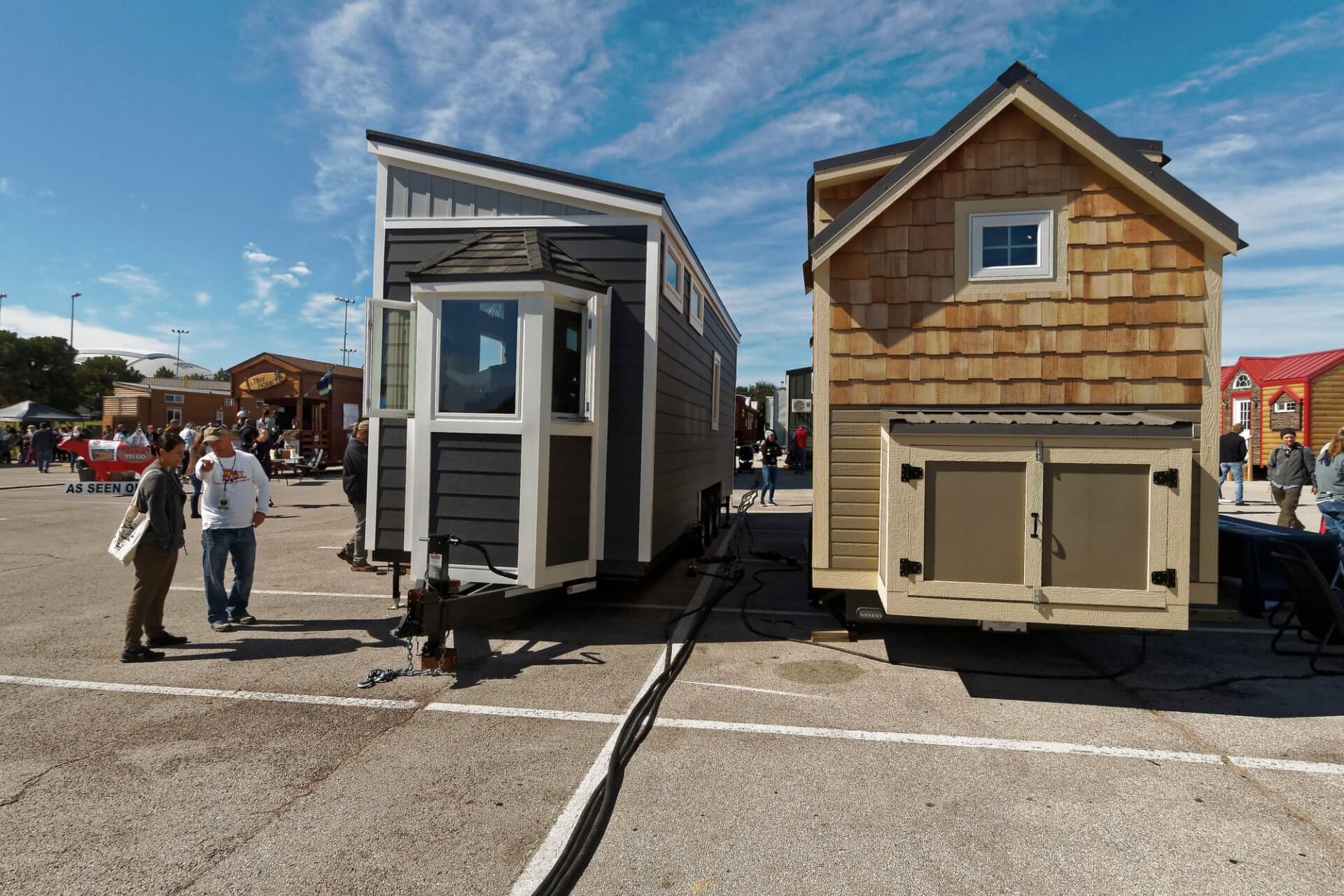Is Your Car Strong Enough to Tow a Tiny House?
Jun 09, 2022

As an Amazon Associate, Modded gets commissions for purchases made through links in this post.
If you’re planning on towing a tiny house, you must have a strong enough vehicle. Not just any car has the power to tow a house, no matter how “tiny” the structure might be. Here are all the cars and trucks that can tow a small house, plus the tools and equipment you will need to safely drive the house to its destination.
Vehicle Requirements
Your vehicle must weigh a certain poundage and belong to a specific class, depending on the size of the house you need to tow. Here are the average length and weight categories of tiny houses:
- 12-14 feet, 5,700-6,650 lbs.
- 16-18 feet, 8,550-9,500 lbs.
- 24-28 feet, 11,400-13,300 lbs.
- 32-36 feet, 15,200-17,000 lbs.
Determine which category your house falls under, then play on the safe side and add another 1,000-2,000 pounds. It’s better to overestimate than underestimate in situations involving heavy machinery.
In the United States, vehicles belong to one of eight specific weight classifications established by the Federal Highway Administration and the U.S. Census Bureau. Here is each class’s maximum gross vehicle weight rating (GVWR) and some vehicle examples:
- Class 1: 6,000 lbs. Solid trucks, vans SUVs like the Ford Ranger, and Jeep Grand Cherokee fall under this class.
- Class 2A: 8,500 lbs. Bigger trucks like the Toyota Tundra and Chevy Silverado start to appear.
- Class 2B: 10,000 lbs. Now we’re getting into the heavy-duty trucks, including the Ram 2500 and Ford F-250.
- Class 3: 14,000 lbs. This class mostly consists of commercial vans, but dual-rear-wheel pickups like Ram 3500 and Ford F-350 also make the cut.
- Class 4: 16,000 lbs. Commercial vans and fleet trucks of the 4500 variety dominate this class.
- Class 5: 19,500 lbs. This class includes more powerful versions of previous classes, such as the Isuzu NRR and Ram 5500.
- Class 6: 26,000 lbs. Huge fleet trucks like the International Durastar and Chevrolet C6500 belong in this class, but they’re not quite “heavy” by FHA standards.
- Class 7: 33,000 lbs. This class includes trucks with high-volume payloads, such as the Peterbilt 220 and Autocar ACMD.
- Class 8: 33,000+ lbs. Only semi-trailer trucks belong in the heaviest and most powerful class.
The first three classes have the most appropriate powertrain specifications – engine, wheels, transmission, etc. – for towing a tiny house. Despite having higher towing capacities, the trucks and vans in the higher classes are challenging to drive. Unless you have a commercial driver’s license and sufficient experience, towing with one of these vehicles is a bad idea.
Specs to Consider
Most trucks, vans, and SUVs have the strength to tow a tiny house without issue. However, some vehicle specifications can make your life much easier. Consider making these modifications or finding a new vehicle with more of these features:
- Diesel engine: Diesel engines have more torque than gas engines and can pull more weight. However, they also add a few thousand dollars to the vehicle’s price, so choose wisely.
- Transmission: Although automatic transmissions might be better overall, a manual transmission is the more reliable option for towing because it gives you more control over the vehicle’s speed and acceleration.
- Rear suspension: Rear suspension helps keep the vehicle balanced on turns, which becomes a greater challenge when towing heavy loads.
- Extendable side-view mirrors: Regular side-view mirrors might not allow you to see behind the house on the road. Invest in some extendable side-view mirrors to expand your vision and drive safely.
- Hitch: Your tow hitch must match the vehicle’s strength, otherwise it will break before you reach your destination. Make sure the hitch is the appropriate size before linking it to the trailer.
Pre-Towing Checklist
Once you have the right vehicle and hitch, you’re almost ready to connect the trailer and start the journey. The last thing you need to do is lock down the home’s interior. Tiny homes have surprisingly sturdy frames compared to other mobile homes, but that doesn’t mean damage is impossible to sustain.
It’s a good idea to write a pre-towing checklist to account for every part and make sure the house and vehicle stay safe. Your checklist should include these items:
- Fill up the vehicle’s tank.
- Close all of the house’s doors, windows, and vents.
- Draw and secure the house’s shades.
- Secure all loose objects in the house (refrigerator, silverware, etc.).
- Disconnect all utilities.
- Raise or remove the jacks.
- Remove wheel blocks.
- Lock the doors.
You get the idea. Everything in the house should be secure so nothing breaks and the weight distribution remains consistent. Use bungee cords, zip ties, storage bins, and any other trailer tools to make sure the house’s contents remain stable during the journey.
Tow Your Tiny House With Confidence
Pulling an entire house behind you on public roads will feel intimidating at first, but you will feel much more confident in your vehicle and hitch after completing the initial trip. Just remember to compare the home and vehicle weights, write that pre-towing checklist, and make wide turns when you drive.





